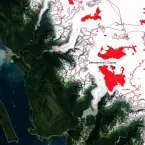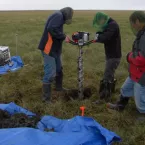
NASA National Snow and Ice Data Center Distributed Active Archive Center (NSIDC DAAC)
Enabling researchers and data users to better understand how changes in the cryosphere impact our planet.
Catch up on news and stories about how NSIDC DAAC data are being used in research, as well as spotlights on how you can use the data, tools and resources we offer. If you are using NSIDC DAAC data in your research, teaching, or some other way, let us know and we may feature your work in our next article. Share your story with us today.





